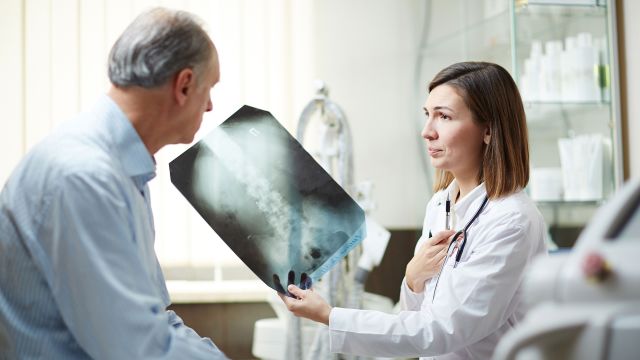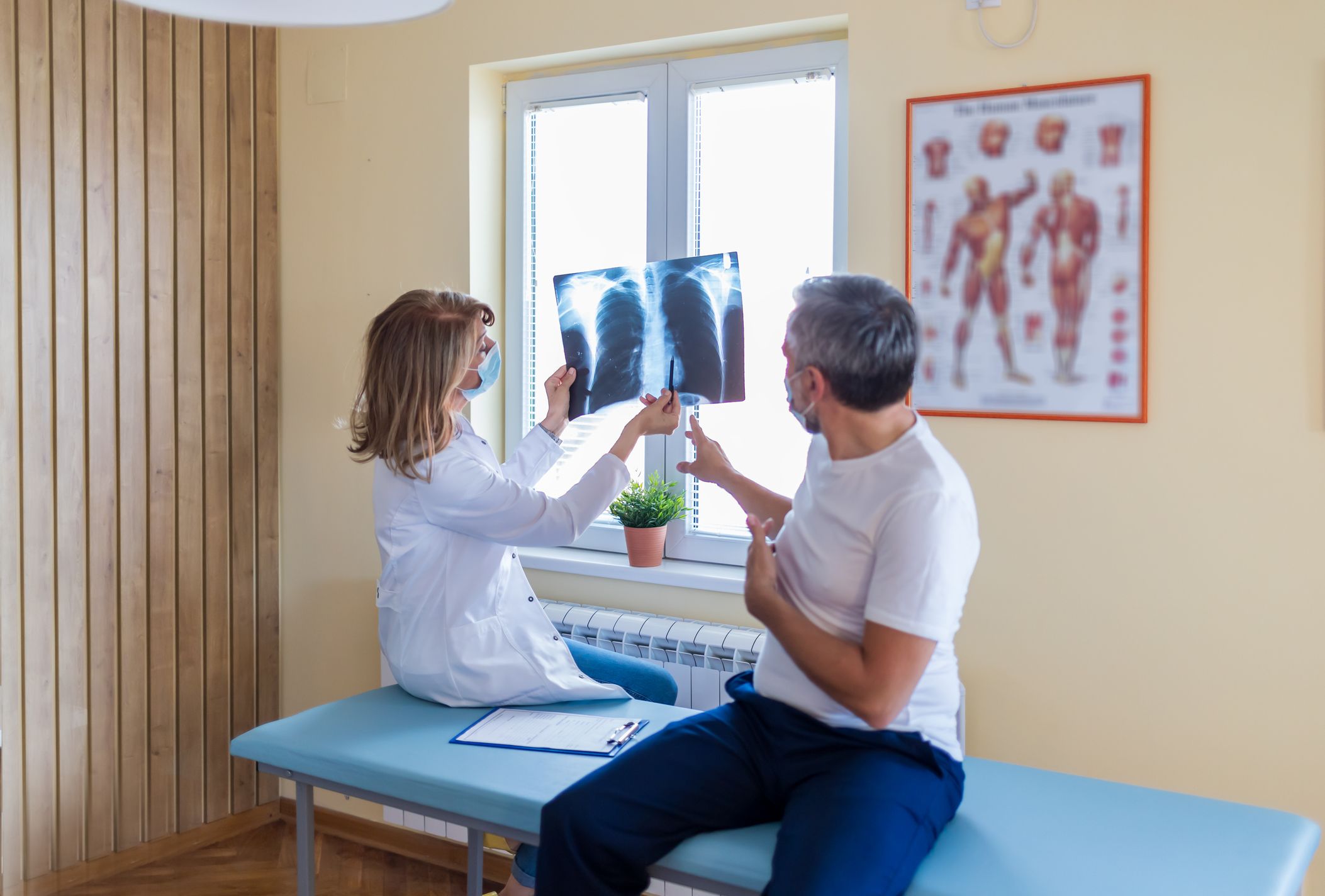Updated on September 26, 2024
Infections are a frequent and potentially fatal complication in patients who have lung cancer. A study published in the Archives of Pathology and Laboratory Medicine, which looked at autopsy results of lung cancer patients over a 21-year period, found that infections like sepsis and pneumonia were the second leading cause of death.
Learn about the relationship between lung cancer and infections, the signs and symptoms of an infection, and the steps you can take to prevent an infection from happening.
What is an infection?
An infection occurs when microorganisms—such as bacteria, viruses, parasites, or fungi—invade healthy tissue. The flu, COVID-19, the common cold, pink eye, athlete’s foot, and strep throat are all examples of infections. The most common infections seen in lung cancer patients are pulmonary infections, which are infections in the lungs. Persistent or frequent respiratory infections like pneumonia and bronchitis can also be signs or symptoms of lung cancer.
Why lung cancer increases risk of infection
There are several ways in which having lung cancer increases a person’s risk for infection. In order to escape being attacked by the immune system, some types of non-small cell lung cancer are able to suppress immune functions and disrupt how the immune system of the lungs works.
Cancer treatments, such as chemotherapy and radiation therapy, also weaken the immune system and can make a person more susceptible to infection. Cancer-related infections often arise from a condition called neutropenia. Neutropenia occurs when the body’s neutrophils (a type of white blood cell) decline in number. Since white blood cells help fight infection and disease, when a white blood cell count becomes lower than normal, a body becomes more susceptible to infections. Infections may also arise as a complication from surgery to treat lung cancer.
Other factors to consider are chronic obstructive pulmonary disease (COPD) and cigarette smoking. COPD is the name given to a group of respiratory diseases that result from irreversible damage to the lungs. Coughing, sputum production, and difficulty breathing are major symptoms. COPD and lung cancer often occur together, and lung cancer is one of the leading causes of death among people with COPD. People who have COPD are more at risk for infections in the lungs.
Cigarette smoking is the biggest risk factor for both lung cancer and COPD, and many people who are diagnosed with these diseases continue to use tobacco even after being diagnosed. Several studies have shown that cigarette smoking increases a person’s risk of bacterial and viral infections, including infections like the flu and tuberculosis. People who smoke are also at increased risk of becoming severely ill if they are infected with COVID-19.
Signs of infection to watch out for
If you or a loved one has been diagnosed and/or treated for lung cancer, it is important to know the symptoms of infection. One of the major symptoms of an infection is a fever. If a person has a fever of 100.4° F or higher, call your healthcare provider (HCP) or seek emergency medical treatment. Other symptoms of infection include:
- Sweating or chills
- Cough, or cough that increases in severity
- Shortness of breath
- Sinus pain, headache, or earache
- Sore throat
- Mouth sores, or a coating inside of the mouth or on the tongue
- Congestion
- Stiffness or aching in the neck
- Pain during urination
- Cloudy or bloody urine
- Diarrhea
- Vomiting
- Confusion
- Pain, swelling, redness, or tenderness in the abdomen
If you or a loved one has had a surgical or other medical procedure, signs of infection include redness, warmth, swelling, and drainage. This can occur at the site of the procedure or anywhere on the body.
How to help prevent infection
There are several precautions that a person with lung cancer can take to protect themselves from infection. This includes basic measures like washing your hands, maintaining good hygiene, avoiding people who are sick, and practicing food safety.
Since smoking compromises your body’s ability to fight off bacteria and viruses, you should quit if you haven’t already. If that’s not reason enough to kick the habit, smoking also makes cancer treatments less effective, can fuel the growth of some tumors, increases the chances of cancer returning, and increases your risk of dying from cancer.
Immunizations to protect against the flu, COVID-19, and pneumonia are also recommended for patients with lung cancer. Speak with your HCP about which vaccinations are recommended.






